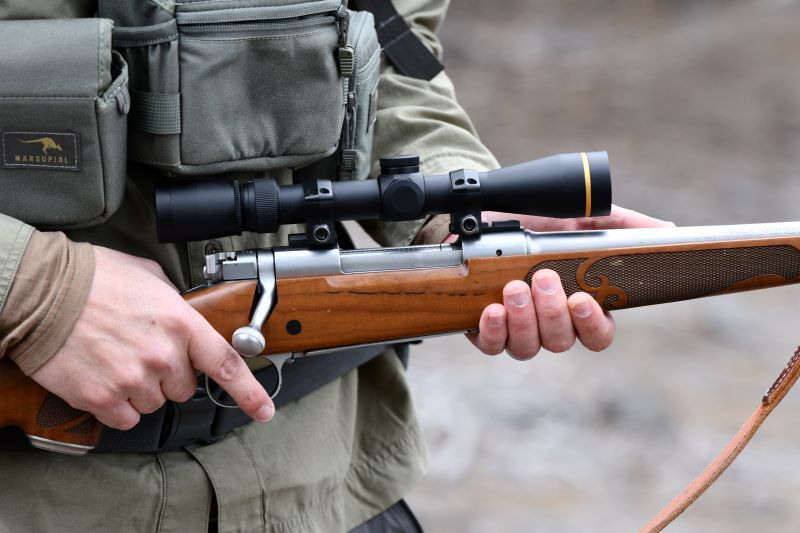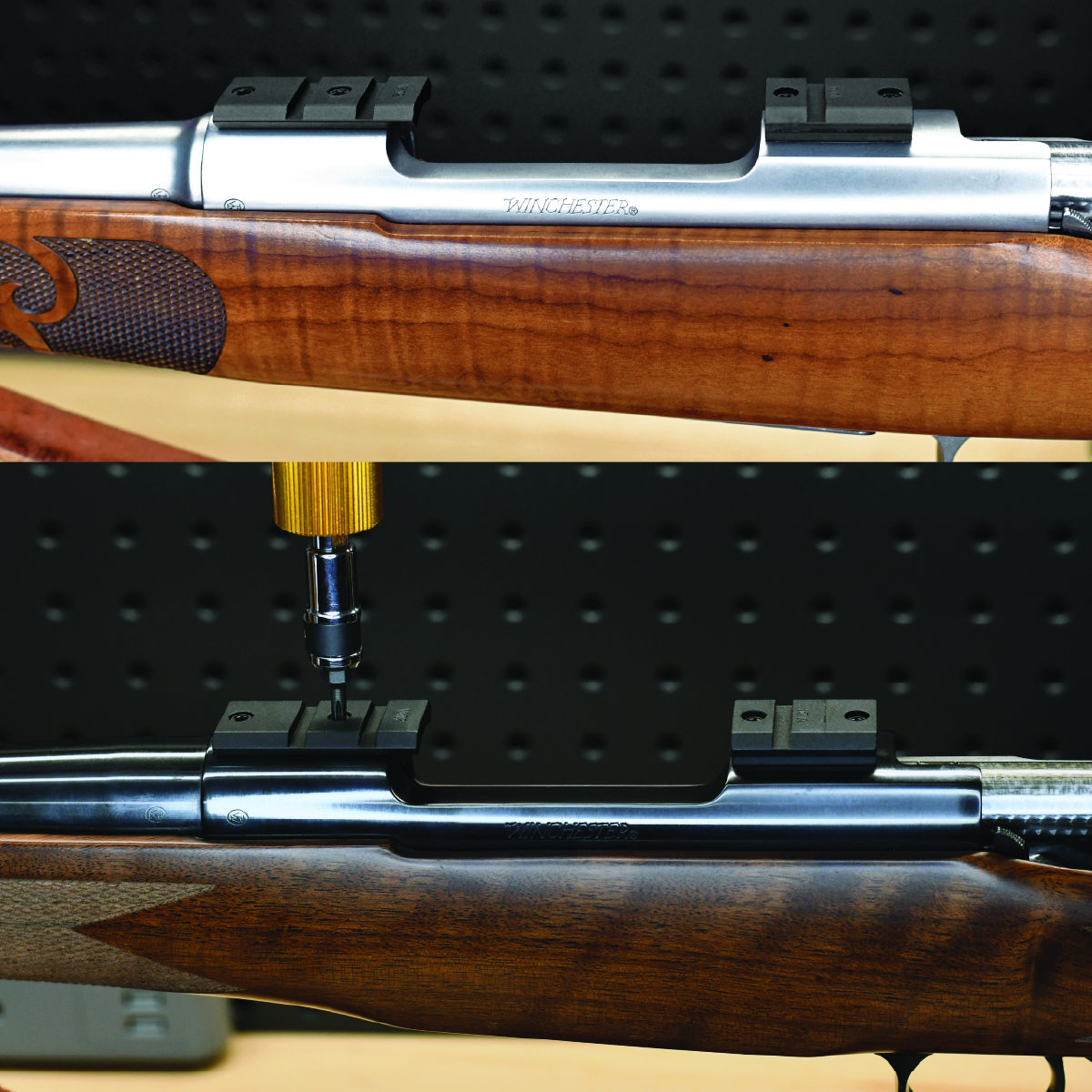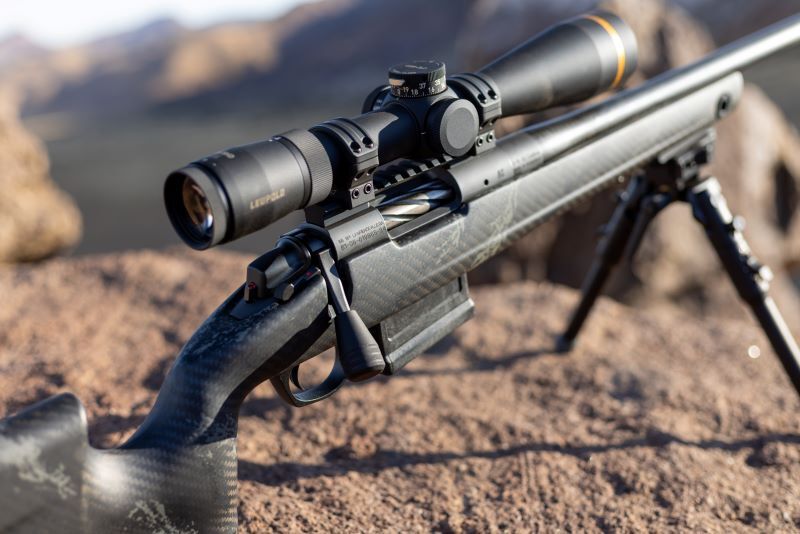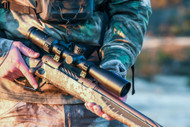At Warne®, we know that shooters understand the importance of a rock-solid mounting system for their optics. You’ve invested in a quality rifle and spent time picking out the right scope for you, for the system to work you need the correct mounting solution. One critical factor often overlooked when selecting scope mounts is your rifle's action length.
Much like knowing what tube size your scope is, beginners are sometimes not aware that there are different options. It might sound technical but understanding whether your rifle has a "short action" or "long action" is fundamental to choosing the correct scope mount. Let’s break down why.

What is Rifle Action Length?
In simple terms, the "action" of your rifle is the mechanism that loads, fires, and ejects cartridges. The action is the central hub which the barrel, trigger, bolt, scope mounts and stock or chassis is attached to. When we talk about action length, we're referring to the physical length of the action, which is designed to accommodate different cartridge sizes. The majority of bolt action rifles can be broken down into 2 action lengths.
- Short Action (SA): These rifles are built for shorter cartridges (e.g., .308 Winchester, 6.5 Creedmoor, .260 Remington, .243 Winchester).
- Long Action (LA): Designed for longer, more powerful cartridges (e.g., .30-06 Springfield, .300 Winchester Magnum, .270 Winchester, 7mm Remington Magnum).

In the photo above there is a long action and a short action rifle of the same make and model. Even though these rifles use the same 2-piece base set, they take a different 1-piece base due to the overall hole spacing difference.
The Long and Short of it
If you have a rifle in a cartridge that is based on the .308 Winchester parent case you likely have a short action, and if your rifle is based on the 30-06 parent case you have a long action, but there are more cartridge and action length options out there.
- Super Short Action: These rifles are built for very short cartridges, in some cases these cartridges can be offered in a standard short action or have their own super short (e.g., .223 Remington, .204 Ruger). A good example of this is the Browning X-Bolt. Most rifles chambered in .223 Remington or 22-250 Remington are a short action, but the X-Bolt uses a super short action.
- Magnum Action: Designed for cartridges that are larger than the 375 H&H Magnum (e.g., .416 Rigby, .300 PRC, .338 Lapua Magnum, .458 Lott).
- Short Magnum (WSM): Some intermediate or short magnum cartridges can have their own action, and sometimes they can be a short action. A good example is the Winchester Model 70. When the WSM cartridges were introduced, a new action was created for it. Eventually they discontinued the standard short action so all short and WSM cartridges use the WSM action. On any current production Model 70, the short action receiver is actually a WSM (e.g., .270 WSM, .300 WSM).

Special Cases
There are some rifles where the action length does not matter because there is only one action available and all cartridges offered fit in that action length. Some examples of this are the Tikka T3/T3x, Savage Axis and Remington 783 series of rifles, or rimfire rifles due to a fixed action length. Other cases where the rifle has an integral base that cannot be removed like custom actions or any of the AR style rifles, the action length does not really matter, you just need to pick the correct scope mount for the optic and firearm. A note about custom rifles: sometimes the cartridge does not determine the action length. Anyone who has mounted a lot of scopes can attest to short action cartridges using a long action receiver (though rare) turning into a frustrating experience picking the correct scope base.
Why Does Action Length Matter for Scope Mounts?
Here's where the rubber meets the road. The length of your rifle's action directly dictates the spacing of the mounting holes on your receiver if you are using a 1-piece base like a picatinny rail. Even if a short and long action receiver of the same model uses the same 2-piece base set, the overall hole spacing will differ between them. Sometimes it is even critical to know the action length to select the correct 2-piece bases. For example we will refer back to the Winchester Model 70. The short, WSM and long action receivers all use the same 2-piece base set, but the Safari Express action requires a unique base set. This is not even getting into the discussion of pre vs. post 64 or pre war Model 70 rifles (the Model 70 can be difficult to select bases for if you can't tell).
How to Determine Your Rifle's Action Length
The easiest and most reliable way to determine your rifle's action length is to:
- Check the caliber: Generally, certain calibers are associated with specific action lengths (e.g., .308 is short action, .30-06 is long action). A quick online search for your rifle's specific model and caliber will confirm this.
- Consult your rifle's manual: Your owner's manual may specify the action length and advise what type of scope base to use.
- Measure screw spacing: For some rifles, particularly older models or specific manufacturers, measuring the distance between the action screws can provide a definitive answer. While it is rare that this step is needed, Some models have hole spacing or screw sizes that have changed over the years and the only way to know what it needs is to measure.
- When in doubt, check with an expert: Scope mount manufacturers deal with these questions all day, every day and can be a great resource. You can also use tools like Warne’s Find my scope mount to help select the proper base once you know your action length.
Before you shop for your next scope mount, take a moment to confirm your rifle's action length. This simple step will ensure you can quickly and easily select the perfect Warne mount. When you are ready to select a scope base, it helps to know the different styles available. This article may help you decide which style is best for you: Weaver vs. Picatinny Style Bases.


